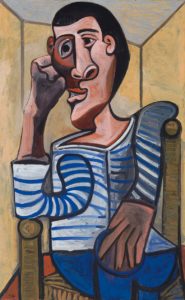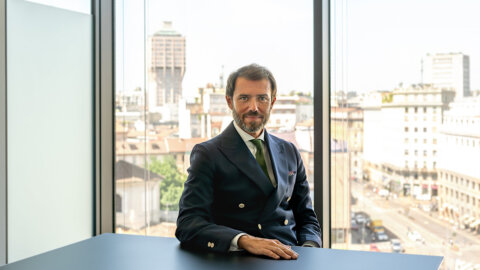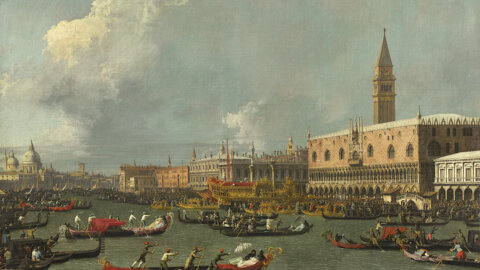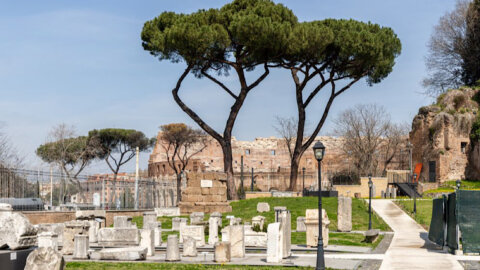Executed in 1943, at the height of the Occupation, Le Marin offers one of the most profound and revealing views into Picasso’s wartime psyche. ‘From the depth and power of expression to his striped Breton shirt, Le Marin is an extraordinarily vivid portrait of the artist,’ confirms Adrien Meyer, Co-Chairman, Impressionist and Modern Art, Christie’s New York. ‘Painted at both Picasso’s and Western civilisation’s lowest ebb, this is art history and 20th-century history writ large. The fact that Le Marin once inhabited the legendary collection of Victor and Sally Ganz makes this picture all the more exceptional.’
Le Marin last appeared at auction in 1997, as part of the legendary Christie’s sale of The Collection of Victor and Sally Ganz. Over their lifetime together, the couple assembled what is still one of the most celebrated collections of the 20th century. ‘All in all, he was the best collector we had…’ Leo Castelli once remarked. ‘For anyone who wants to know this period, they must look at Victor and apply his lessons.’

Of all the artists that they collected, the Ganzes were most committed to Picasso, acquiring works by him exclusively over two decades, including Les Femmes d’Alger (Version ‘O’), which became the most expensive work of art ever sold at auction when it realised $179.4million at Christie’s New York in May 2015. Les Femmes d’Alger continues to hold the world auction record for the artist, and is the second-highest result for any work at auction.
Although Picasso was a Spanish citizen, the decision to stay in France took great courage. As the painter of Guernica, he was an internationally recognised anti-fascist and Hitler had denounced him by name in a speech. German agents regularly visited his studio in search of incriminating evidence, during which they routinely insulted him and destroyed his paintings.
It was previously thought that these threats never rose above the level of harassment. However, a letter found in the Archive Picasso, dated 16 September, 1943 — just five weeks before he painted Le Marin — demonstrated that the Nazis planned to deport Picasso to a concentration camp.
The artist was saved only by the intervention of friends: André-Louis Dubois and Jean Cocteau, and especially by Arno Breker, Hitler’s favourite sculptor, who spoke to the führer on Picasso’s behalf. Other people in his circle were not so lucky. Max Jacob, who had been one of Picasso’s closest friends, was deported to a concentration camp in the spring of 1944 and died there. That August, the Allies would liberate Paris.
Created only weeks after the most dangerous crisis Picasso personally faced in the war, Le Marin reflects the artist’s emotional and psychological distress. ‘I have no doubt that the war is in the paintings I have done,’ he said in 1944. Perhaps no painting he made during the Occupation more directly conveys this feeling than Le Marin.
Image: Picasso in his studio, rue des Grands Augustins, Paris, France 1944, by Lee Miller. Photo: © Lee Miller Archives, England 2018. All rights reserved. leemiller.co.uk. Art: © 2018 Estate of Pablo Picasso / Artists Rights Society (ARS), New York






Pingback: $70 million Picasso painting accidentally damaged, pulled from auction – Alyssa Fields
Pingback: $70 million Picasso painting accidentally damaged, pulled from auction | Give Info
Pingback: $70 million Picasso painting accidentally damaged, pulled from auction – SaleSpree.com blog
Pingback: $70 million Picasso painting accidentally damaged, pulled from auction | TechBlogger